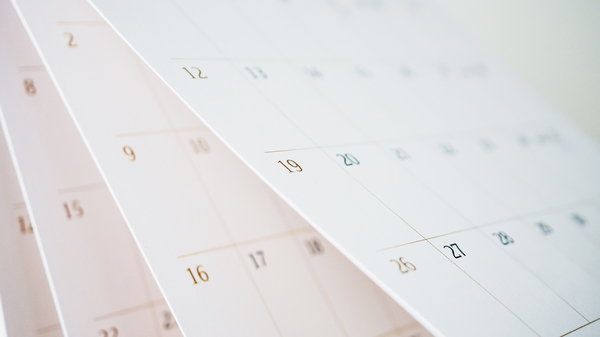How Long Is a Common Year?
A common year is a standard Gregorian calendar year with 365 days divided into 12 months, and only 28 days in February.

A common year has 365 days. In a leap year, a day is added.
©iStockphoto.com/Kwangmoozaa
A Calendar Year
In our modern-day Gregorian calendar, a common year has 365 days, as opposed to a leap year which has 366 days.
A Gregorian common year consists of 52 weeks and one day. Because of this, January 1 and December 31 of a common year are always on the same day of the week, and the next year begins on the next day of the week. For instance, the common year 2025 starts and ends on a Wednesday, and 2026 begins on a Thursday.
Why a week has 7 days (and in that order)
In leap years, the first and last days fall on different days of the week. 2024 was a leap year. It started on a Monday and ended on a Tuesday.
Out of every 400 years in the Gregorian calendar, 303 years are common years. The rest, 97 years, have an intercalary day or leap year day, making them 366 days long.
Why Mars has more leap years than Earth
Common Years in Other Calendars
Hebrew Calendar
The Hebrew Calendar, which is a lunisolar calendar, has 12 months in a common year, which can have anywhere from 353 to 355 days. Leap years in such a calendar have 383 to 384 days and 13 months.
Chinese Calendar
A common year in the Chinese Calendar, which is also a lunisolar calendar, has 12 months with 353–355 days. A month in a Chinese common year corresponds to the cycle of the Moon, from full Moon to full Moon. Because of this, a regular month can have 29 or 30 days. Leap years in the Chinese Calendar have 13 months.
Islamic Calendar
Common years in the Islamic Calendar, which is purely a lunar calendar, have 354 days divided into 12 months. Some months have 30 days while others have 29 days. 11 out of 30 years are Islamic leap years, where the leap year has 30 days in the last month of the year, making the Islamic leap year 355 days. Different communities follow different rules about how to space the leap years in the 30-year leap cycle.
Indian Calendar
Both solar and lunisolar calendars are used in India and the Indian subcontinent, each with regional variations. The solar calendar aligns with astronomical calculations for leap years, rather than a fixed cycle. Common years have 365 days, and leap years have 366.
Two kinds of lunisolar calendars, Amanta and Purnimanta, are used in the Indian system. The Amanta calendar counts months from new Moon to new Moon, while the Purnimanta counts from full Moon to full Moon. The common year in the Amanta Calendar is 354 days long, with each month averaging about 29.5 days. To maintain alignment with the solar year, seven intercalary months, called Adhik Maas, are added at different intervals over a 19-year cycle.